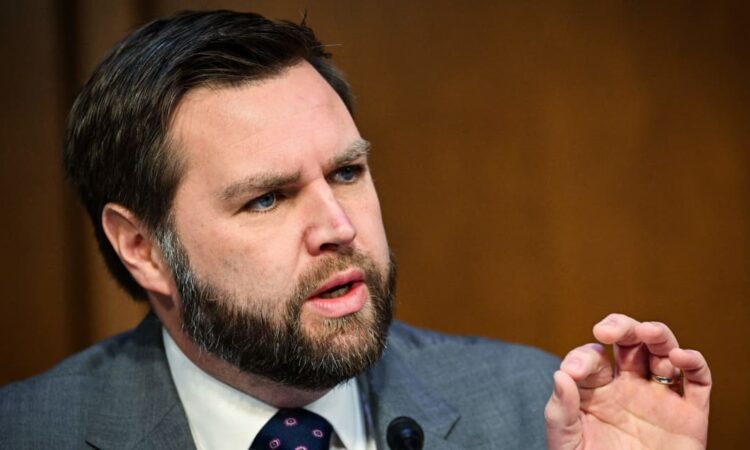
An exorbitant privilege or a curse? Both terms have been used to describe the U.S. dollar’s unique status as the world’s primary reserve currency. It’s the main medium of exchange for global trade and finance, and the premier store of value for financial institutions and corporations around the world, as well as for individuals abroad who prefer greenbacks to their own less-stable currencies.
Valéry Giscard d’Estaing, France’s finance minister from 1969 to 1974 before becoming his nation’s president, charged that the dollar’s central role let the U.S. run sustained balance-of-payments deficits without a penalty, whereas other deficit-carrying countries would be forced to tighten monetary and fiscal policies or suffer a weaker currency. But, as John Connally, Treasury secretary in the Nixon administration, famously asserted to his foreign counterparts: “The dollar is our currency, but it is your problem.”
In contrast, in a little-noted exchange with Federal Reserve Chairman Jerome Powell during his congressional testimony this past week, Sen. J.D. Vance (R., Ohio) contended that the dollar’s reserve currency status is a “curse.” While it makes imports—which he called “mostly useless”—cheaper, it imposes a “massive tax” on American producers.
Over the past half-century, since the end of the Bretton Woods system of fixed exchange rates for major currencies against the greenback—which, in turn, was convertible into gold at $35 an ounce—U.S. politicians’ attitudes on the dollar have swung back and forth. After President Nixon let it float, or more accurately, sink, Jimmy Carter’s Treasury secretary, W. Michael Blumenthal, appeared to endorse a cheaper buck.
That stance, plus the Federal Reserve’s failed policies in the 1970s, mainly produced double-digit inflation. But by March 1985, then-Fed Chairman Paul Volcker’s anti-inflation campaign, featuring 20% interest rates, combined with President Reagan’s fiscal policies, boosted the buck’s value by 50% (as measured by the
better known by its symbol, DXY). That overshoot produced the Plaza Accord in early 1985, aimed at weakening the greenback and stabilizing exchange rates.
Advertisement – Scroll to Continue
Over the next decade, the dollar would retrace all of its gains and return to its late-1970s low. Then, in the latter half of the 1990s, Robert Rubin, President Clinton’s second Treasury secretary, declared that a strong currency was in America’s interest. The dot-com boom was a magnet for global capital, contributing to a 33% gain for the greenback. After the tech bust at the end of the 20th century, the currency plunged into a long bear market that didn’t bottom until the recovery from the 2008-09 financial crisis in 2010.
After a rebound from mid-2014 through early 2017, the dollar has been in a relatively narrow range, at least compared with previous swings. And in that time, Washington has moved away from Rubin’s strong-dollar mantra. President Trump regularly decried the currency’s strength as harmful to U.S. producers, drawing rare agreement from Sen. Elizabeth Warren (D., Mass.), at the opposite end of the political spectrum.
The dollar’s premier status also has attracted increasing criticism from abroad, notably from China. Beijing asserted that the U.S. stimulus following the financial crisis started a currency war, cheapening the greenback to boost America’s economy. Foreign complaints also have followed the sanctions imposed on Russia for its war on Ukraine—meant to bar Moscow from the dollar-based international financial system.
Advertisement – Scroll to Continue
Vance contends that the dollar’s reserve status has helped hollow out U.S. manufacturing. But a research note this past week from Piper Sandler’s economics team, led by Nancy Lazar, highlights the “U.S. manufacturing renaissance” resulting from the “onshoring” of facilities in recent years.
The trend accelerated after the pandemic and the massive disruption of global supply chains. But the Piper Sandler group points out that it started in 2010 “when it became increasingly clear to the private sector that producing outside the U.S. was becoming dis-economic—for lots of reasons.” And that was while the dollar was mostly on the rise.
The most proximate threat to the dollar’s status would be a U.S. default if Congress doesn’t raise the debt ceiling. Failing to put the government’s debt on a long-term sustainable path also would threaten the greenback, putting it on a trajectory similar to that followed by the British pound, beginning a century ago. And that would indeed be a curse.
Write to Randall W. Forsyth at randall.forsyth@barrons.com

